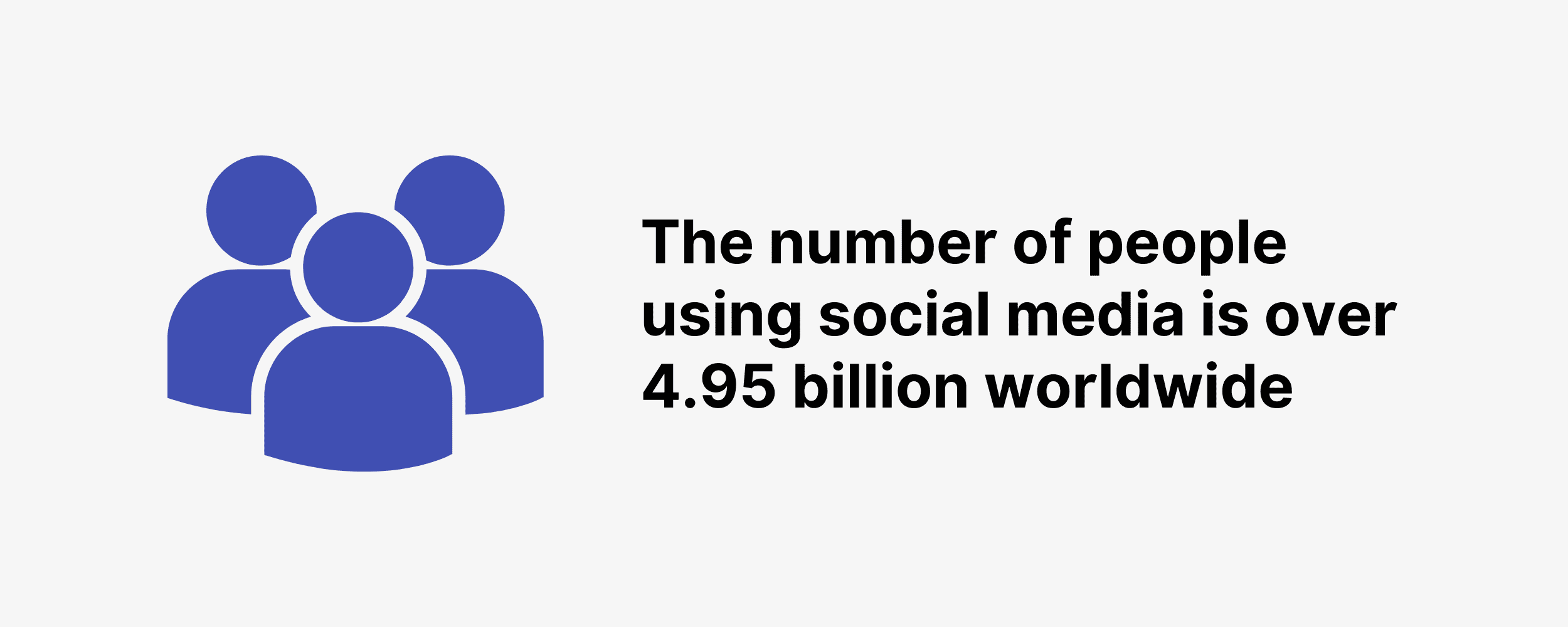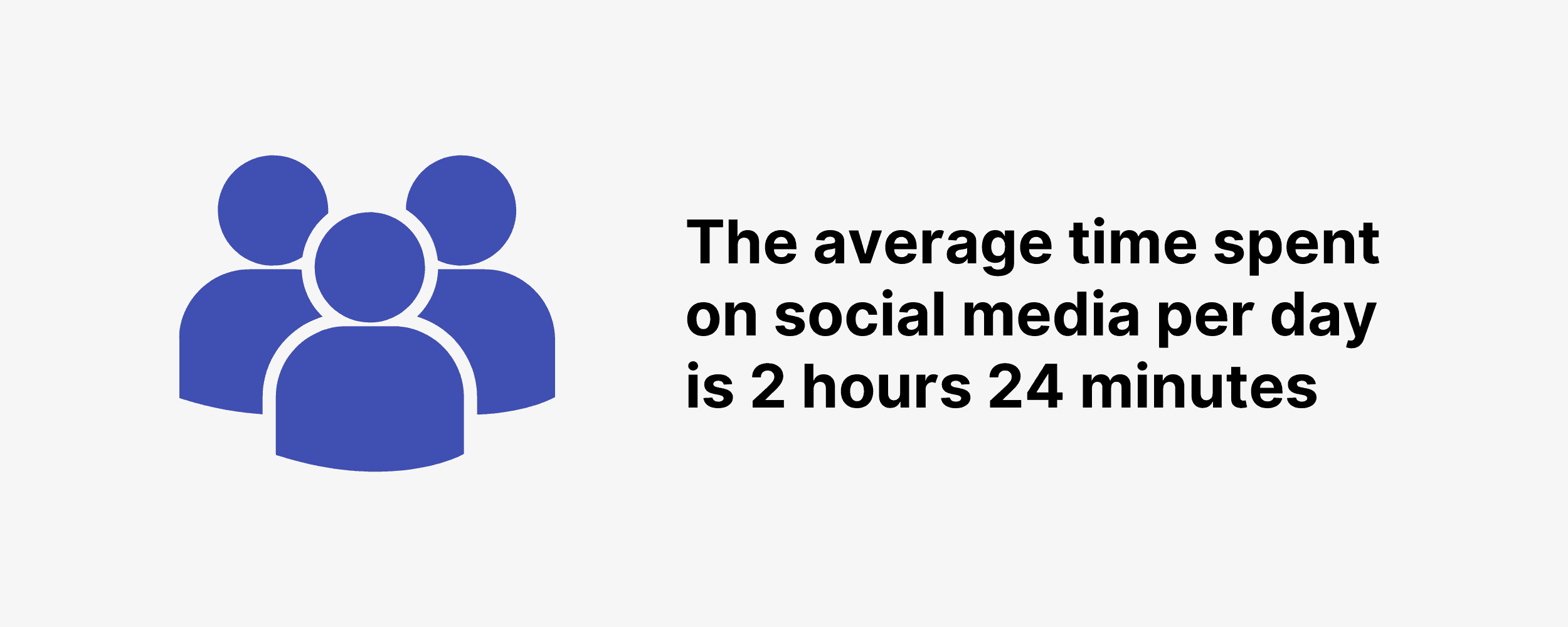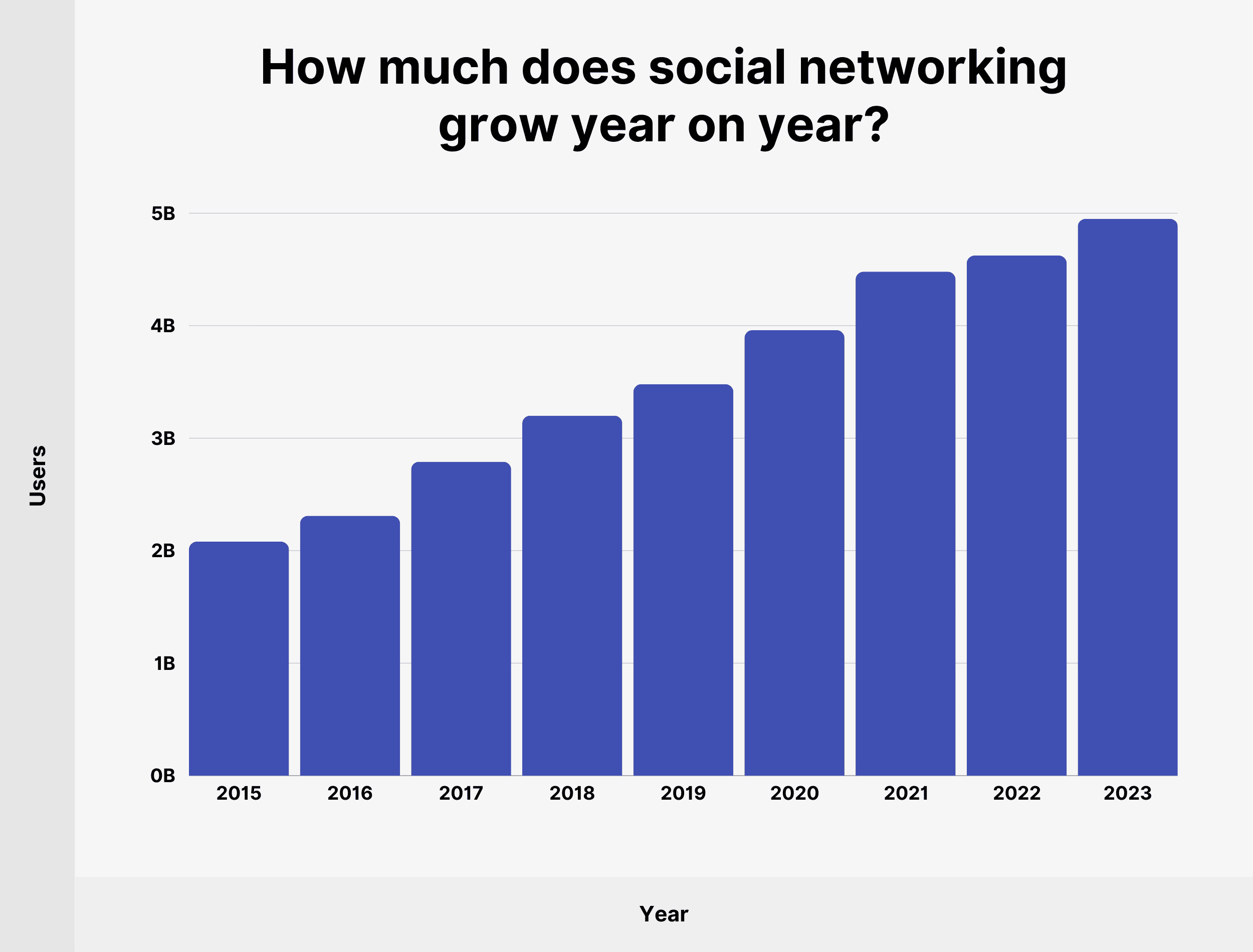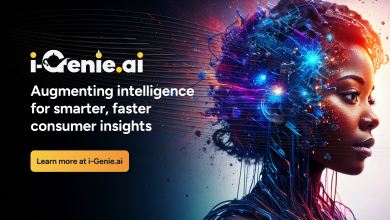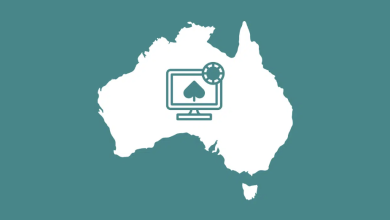
Social media usage statistics: an overview
1. Global reach and growth
Social media users have surged from 2.07 billion in 2015 to 4.95 billion in 2023. Future growth will hinge on better internet access and smartphone adoption, especially in developing regions.
2. Platform engagement
Users interact with about 6.7 platforms monthly and spend around 2 hours and 24 minutes daily on social media.
3. Penetration rates
Social media reaches 61.4% of the global population, with 80.8% of internet users aged 18 and older active, 93.5% of global internet users and 88.4% of mobile users participating.
Advantages of social media for business
- Global connectivity: Social media brings people from around the world closer together, facilitating connections, sharing, and friendship-building.
- Instant communication: It provides a rapid connection to loved ones, enabling instant chatting, calling, or video calling.
- Information access: Social media offers a wealth of information, keeping you informed about news, trends, and updates from friends.
- Business edge: It revolutionizes business marketing through cost-efficient methods, direct customer interaction, and insightful market data.
- Digital communities: Find and engage with individuals who share your interests in online groups, providing support and friendship.
- Professional development: LinkedIn offers essential networking opportunities, educational resources, and career growth possibilities.
- Advocacy amplification: Social media acts as a powerful platform for advocating causes, supporting global issues, and amplifying activist voices.
- Personal development: Access educational content to learn new skills, gain insights, and pursue personal growth.
- Real-time updates: Stay current with real-time news and developments on global events and trends.
Most popular social media platforms
– Monthly Active Users: 774 million
Ideal for B2B marketing, LinkedIn focuses on professional content rather than personal. It’s a great platform for finding collaborators and industry experts, and offers options for display and personalized ads as well as blog publishing.
– Monthly Active Users: 2.89 billion
The most popular platform on this list, Facebook excels in brand engagement. It not only facilitates peer connections but also allows product sales through Facebook Shops and brand promotion through Facebook Ads. About 70% of brands report finding new customers via Facebook.
Tumblr
– Monthly Active Users: 376 million
Ideal for targeting artistic millennials with its customizable blogs and niche market presence.
– Monthly Active Users: 1 billion
Owned by Facebook, Instagram is key for influencer marketing with features like Stories, IGTV, and Instagram Live. Business profiles also enable Instagram Shopping and Insights.
Also learn about how to schedule Instagram posts quickly using tool.
– Monthly Active Users: 430 million
Reddit offers discussions and voting on comments. Marketers can engage in subreddits for audience insights, with Reddit advertising available.
Telegram
– Monthly Active Users: 500 million
A secure messaging app, Telegram supports chatbots, broadcasting messages, and customer support. It allows for large group chats and is expected to introduce an ad platform soon.
Goodreads
– Registered Users: 90 million
Goodreads is a niche platform focused on books. It allows readers to connect, share book recommendations, and link to blogs or websites.
– Monthly Active Users: 454 million
Pinterest serves as a virtual pinboard for sharing images, videos, and GIFs. It’s effective for accessing Shoppable ads and driving website traffic, contributing over 5% of overall referral traffic.
Role of AI in Marketing
The evolution of artificial intelligence (AI) is transforming marketing for teams of all sizes. AI platforms are being developed to assist marketers with tasks like brainstorming ideas, writing copy, and generating images, all crucial for influencer marketing campaigns.
Top Marketing Tasks AI Can Help With
Whether you’re testing AI tools or exploring their applications, here are the top ways AI in marketing can be useful.
1. Offer personalized product recommendations
AI platforms can suggest products post-purchase, leveraging influencers’ impact to boost sales. Amazon Personalize allows tailored product suggestions.
2. Brainstorm ideas
AI platforms can generate campaign ideas based on your target audience, topic, and goals.
3. Refine target audience
AI can analyze large data sets to precisely identify your campaign’s target audience using predictive analytics.
4. Generate hashtags
Provide an AI tool with prompts, and it can suggest branded hashtags for your campaign.
5. Write social copy
Use AI to craft social media posts, such as introducing influencers to your followers or thanking them post-campaign.
6. Create content briefs
AI tools can draft detailed content briefs outlining campaign goals, deliverables, deadlines, and brand tone.
7. Generate inspirational images
AI-generated images can offer direction to influencers while maintaining creative control and authenticity.
8. Create virtual “try-on” opportunities
Brands like Zenni and Wayfair use AI for virtual try-ons, which influencers can demonstrate in their content.
9. Target Ads
AI tools can help create and refine ads, generating keywords, text, and imagery based on your landing page.
10. Search and retrieve campaigns
AI applications with voice search capabilities can quickly pull up past campaign details on command.
11. Manage website traffic with chatbots
AI-powered chatbots, like Sephora’s, provide human-like assistance to website visitors, enhancing their experience.
Conclusion
Social media’s evolution from its early days to its current global prominence underscores its significant impact on communication, business, and personal branding. With nearly 5 billion users worldwide, its influence is clear. As platforms grow and diversify, they play an increasingly important role in shaping interactions and connections.
High engagement across various platforms and diverse demographics highlight the need for tailored strategies. Businesses benefit from social media’s marketing and branding opportunities, though challenges like privacy concerns and platform saturation exist. Staying updated on trends and user behaviors is crucial for maximizing social media’s potential in our digital age.

